
CAMX 2017 fosters networking and collaboration
Opinion
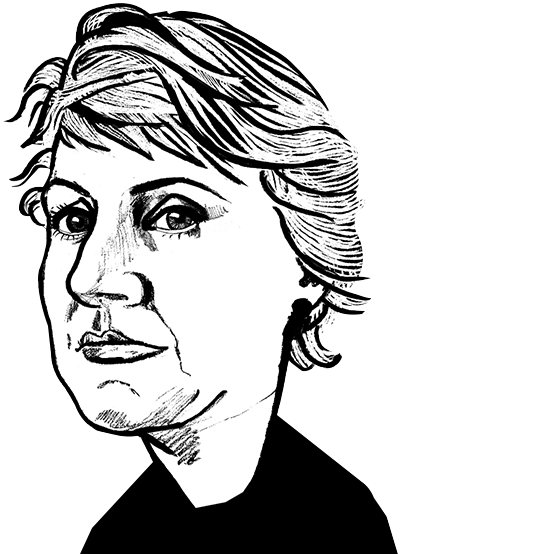

Marie O’Mahony reports from the renamed IFAI Expo, held last month in Orlando, Florida.
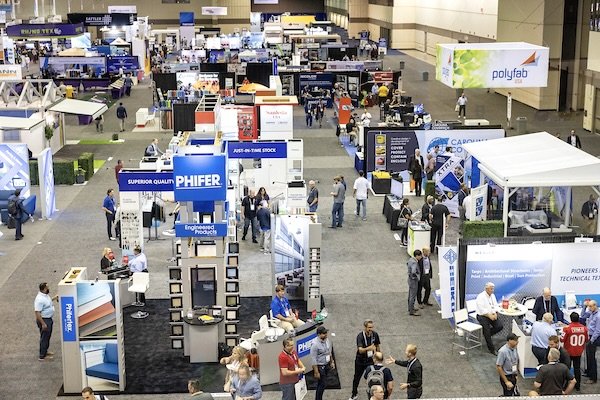
7th December 2023
Marie O'Mahony
|
Orlando, FL, USA
Textiles for Space and Wearables featured highly at this year’s Advanced Textiles Association’s (ATA) annual EXPO 2023, at the Orange County Convention Center, Orlando. Held once again in conjunction with Sun Shading EXPO, the events combined to attract 4517 attendees and 375 exhibitors from North America, Europe and Asia. Following a period of virtual and hybrid expos, the industry appetite for in-person events has assuredly returned.
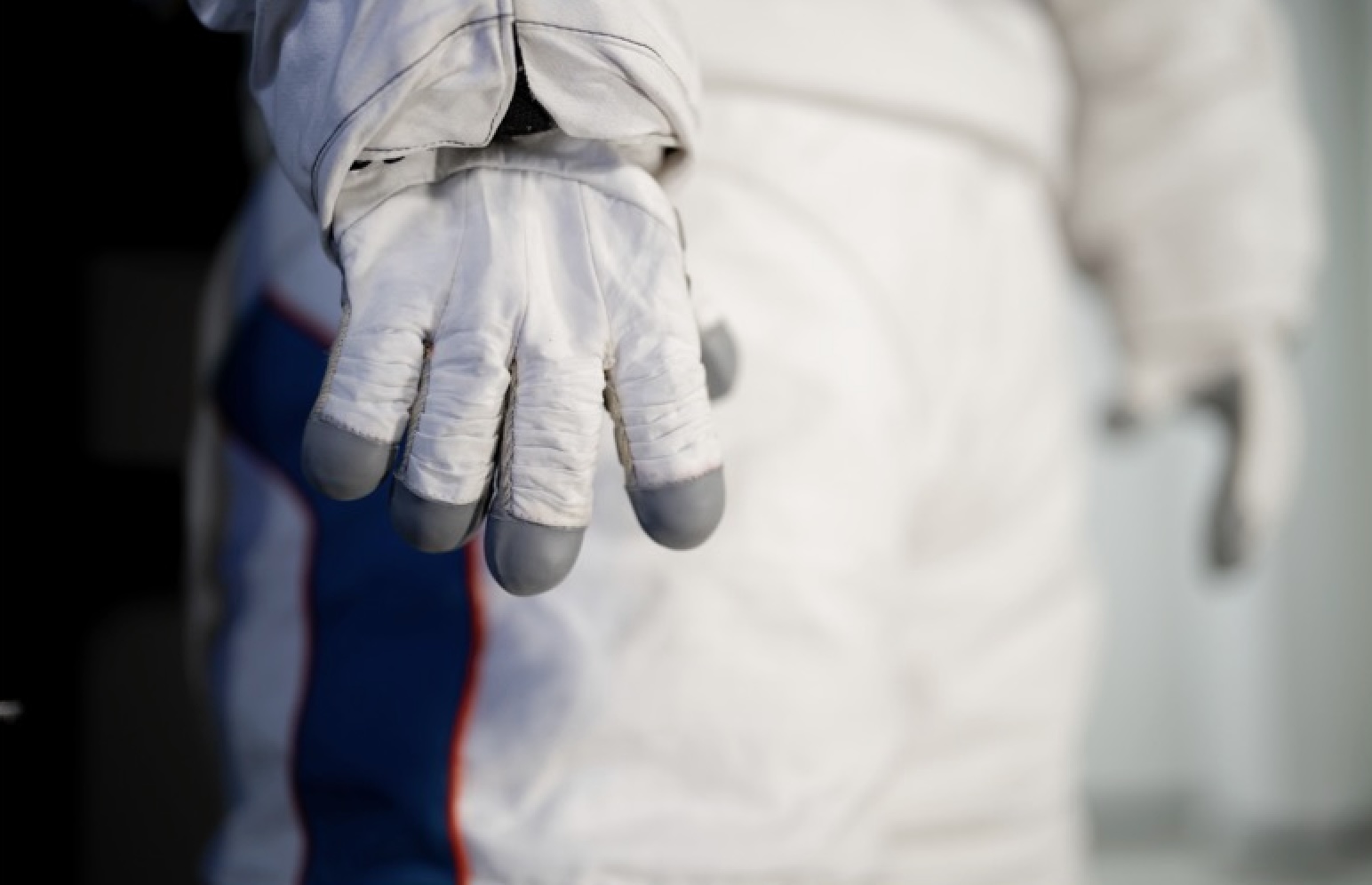
Emerging technologies
The Emerging Technologies Conference was held on the day before the trade show opened, with a series of additional presentations and show floor (campfire) sessions then running throughout. "Besides the name change from IFAI Expo, which was the last step of a comprehensive rebrand of the trade association, we added many new show floor content options, including a live podcast, new education tracks and more,” commented Steve Schiffman, ATA President and CEO. “These are just the first steps of our long-term strategy of improving the value proposition for everyone,” he added.
NASA, NCState, AFFOA, regularly present at the conference and once again provided some great insights as they showcased new research and developments in their respective fields.
Less familiar names included Dr Dawson Cagle, Program Manager for Intelligence Advanced Research Projects Activity (IARPA) speaking about their SMART ePANTS project directed at wearables that will be able to sense by seeing, hearing and locating. Dr Cagle acknowledges that new materials and manufacturing processes are needed to create Active Smart Textiles (ATSs), as they set about the process of developing integrated systems that contains sensors, computation and data storage and power sources that can be mechanically deformed and sufficiently durable. They are currently working with partners on the first phase ‘Built to Last’, that will be followed by ‘Wear it’ and ‘Wash it’.
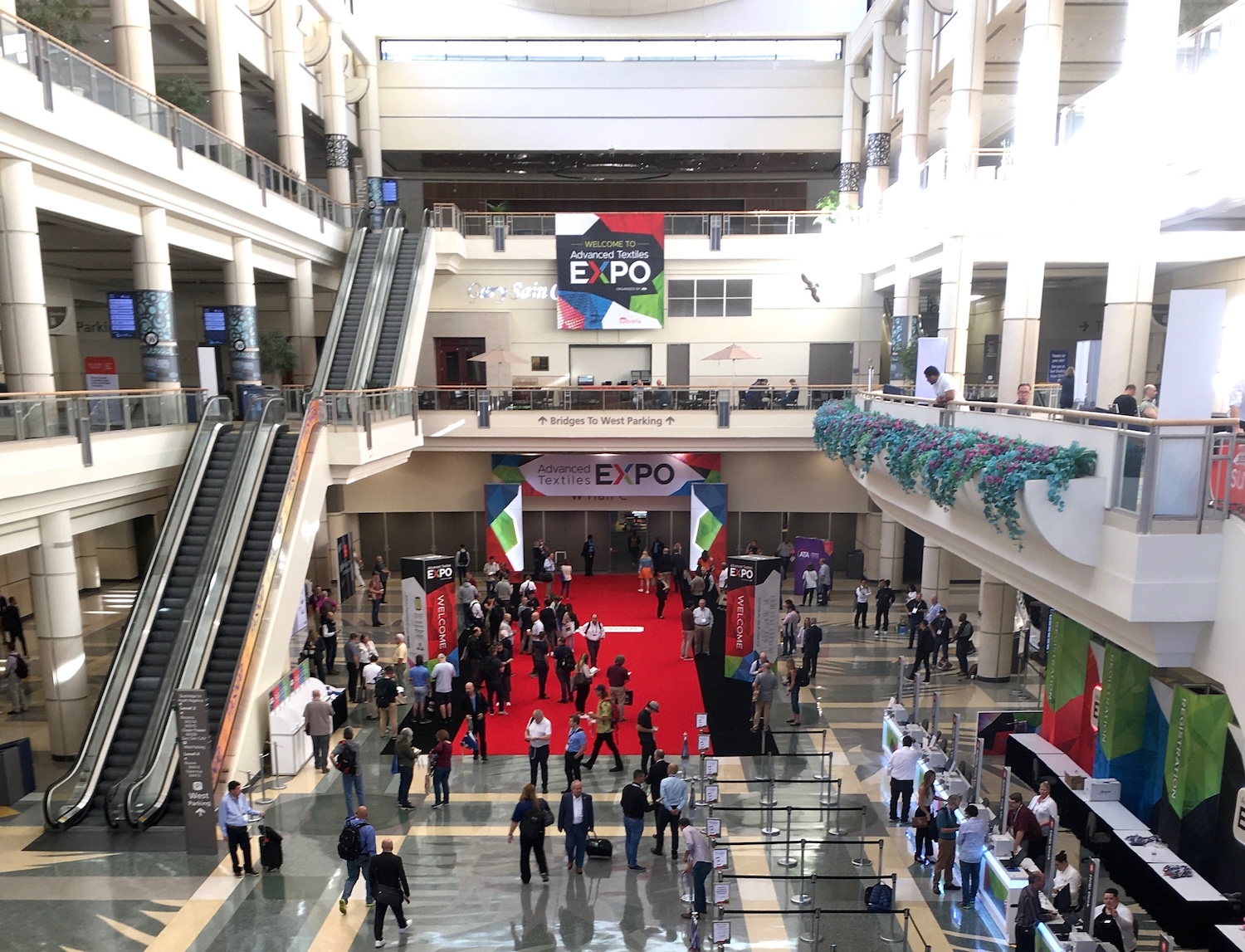
Dark side of the moon
The commercial Space sector was a strong presence, as was NASA, the latter having a booth at the show as it regularly does. Axiom Space was actively looking for fibres and fabrics that could meet the stringent requirements of the Artemis III spacesuit and beyond. Dramatic extremes in temperature, coupled with space dust are just a few of the very long list of challenges, as astronauts travel to the dark side of the moon. Temperatures there can plumet as low as -193 Celsius, that means textiles must be able to perform in cryogenic temperatures. Not all solutions may be conventional fibres, polymer science could also provide answers.
Invention of the year
Exhibiting at the show was Kuraray America which produces a Liquid Crystal Polymer (LCP) that increases in strength as temperature lowers. Bally Ribbon celebrating its centenary was also exhibiting. It showcased a number of narrow width fabrics for applications including space. In addition to their high-performance, the fabrics by their structure provide a good weight to strength ratio using fibres such as Kevlar, Technora and Vectran.
The company has worked with NASA in the development of a 3DMAT Thermal Protection System (TPS) with its 3DMAT Quartz Material using quartz yarns awarded the 2023 NASA Government Invention of the Year. This is produced in a continuous automated orthogonal weave process on a Jacquard loom and then reinforced with a cyanate ester resin while being formed using a transfer moulding process to produce the final composite.
It has been developed for use as compression pads in the Orion Multi-Purpose Crew Vehicle (MPCV). The compression pads perform an array of functions in a challenging environment. They carry the structural loads generated during launch and space operations, as well as the pyroshock separation between the crew and service modules. It must also be capable of acting as an ablative TPS to withstand the high temperature exposure when re-entering the Earth’s atmosphere while keeping the inner surface cool and protected from the heat.
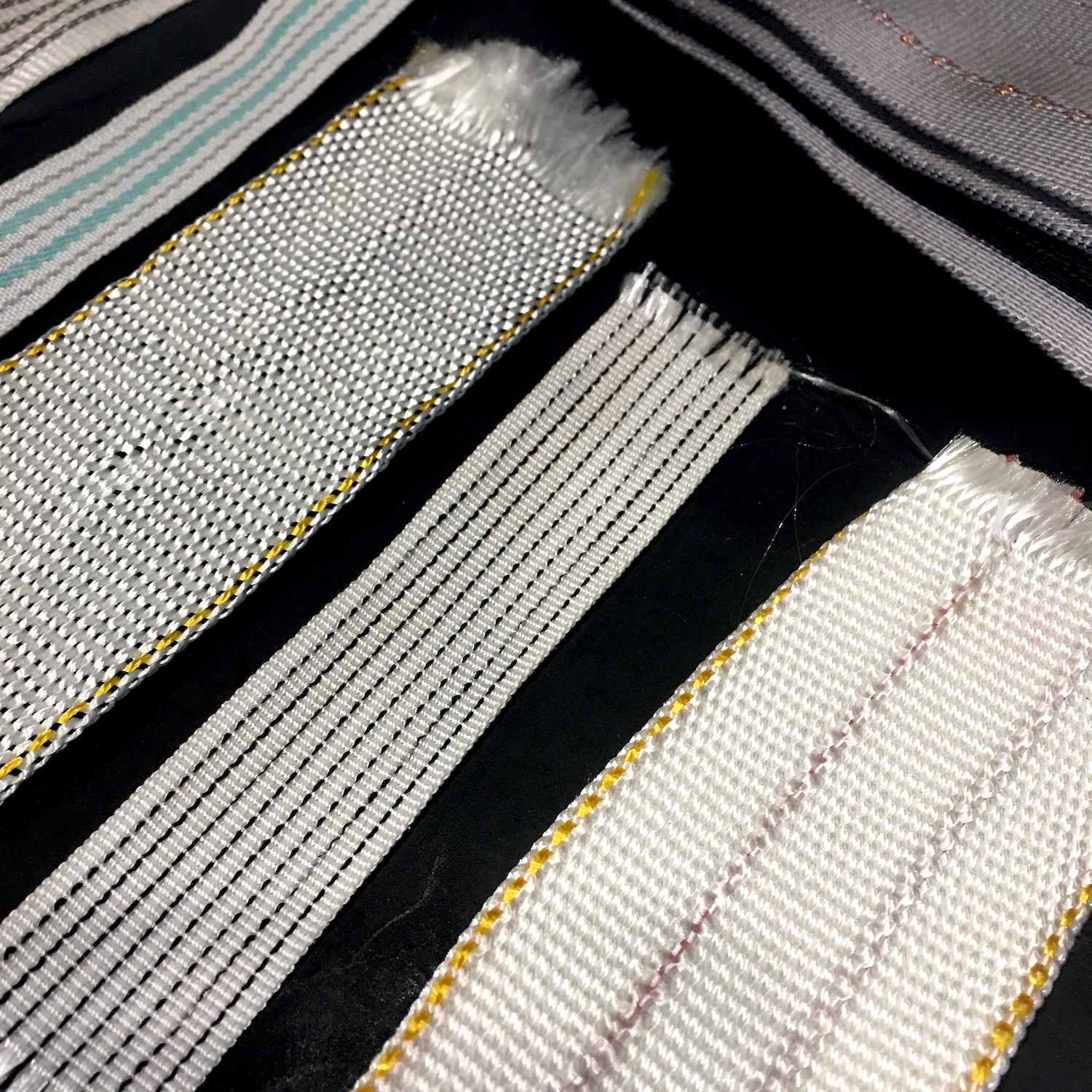
E-textiles
E-textiles and wearables featured highly, with the Advanced Functional Fabrics of America (AFFOA) exhibiting and speaking at the Emerging Technologies Conference. Its mission is to promote innovation and cooperation between smart and advanced textile stakeholders in America, looking to achieve scale and integration in the process.
CEO, Dr Sasha Stolyarov points to its vision of a textiles 2.0 that sees integration to the point where e-fibres function as devices and smart textiles perform as a system. AFFOA showcased progress at its booth with examples such as a monofilament yarn that has been embedded with tiny LEDs. This has now been scaled to manufacture with the Supreme Corporation using it with its ‘upconversion nanoparticles’ to produce a yarn that actively helps the human body to heal from cuts, infections and other medical conditions.
The TTC-Nano-Hybrid LED yarn is capable of energy-harvesting, taking the body’s own energy in the form of heat, and converting this into a light energy that is then reflected back to help heal the body. Bally Ribbon Mills exhibited its innovations in e-Webbing conductive narrow width fabric. These are produced using two alternative processes. The first is metal stranding whereby strands of carbon, nickel, titanium and other alloys are combined with nylon and other non-conductive fibres. In the second process, metal injecting is used. Here fibres are combined with a metal-based powder so that the resulting material has the ability to pick up and transfer electricity or heat.
Future of manufacturing
Manufacturing looked to the future, with conference speakers and exhibitors considering technologies and systems that could offer efficiencies and address environmental and supply chain challenges. Frank Henderson, CEO, Henderson Sewing Machine Co Ltd gave a classroom education presentation titled ‘Shaping the Future Together…How automation, technology and innovation are changing our industry’.
He argued that in order to address the post-pandemic disruption to supply chains, we need to understand Local for Local manufacturing, automation integration and technology innovation. Robotics, technology and innovation he argued has the potential to create efficiencies and address the supply chain issue, but in reducing the carbon footprint can also provide a more sustainable solution. Robotics he shows as possible to integrate into the sewing process in addition to pick and place demonstrating the process for T-shirt manufacturing.
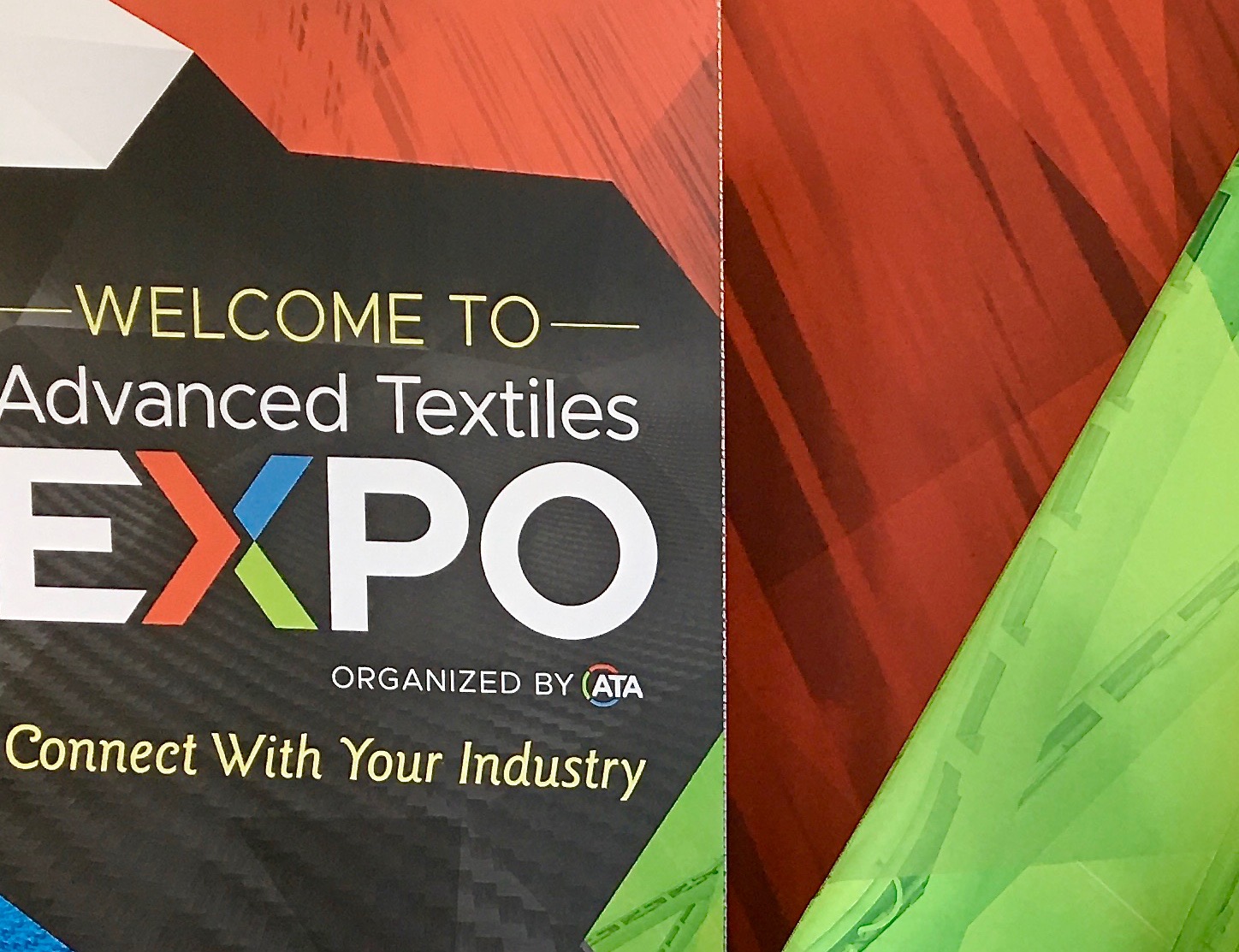
Large-scale sewing of more technical fabrics such as banners he also demonstrated, as well as airbag production with synchronised sewing heads. An additional benefit is in the career opportunities it creates, offering a vision of employment opportunities with more attractive higher skill levels than conventional sewing machines.
The ATA EXPO 2024 will be held in Anaheim, California, 26-26th September, with education starting a day earlier on 25th September.

Business intelligence for the fibre, textiles and apparel industries: technologies, innovations, markets, investments, trade policy, sourcing, strategy...
Find out more